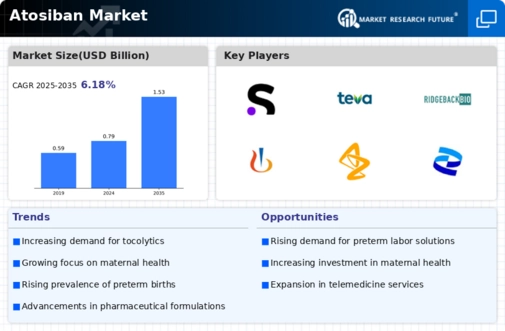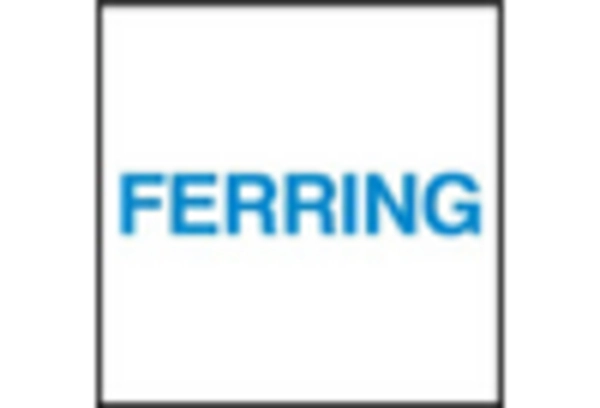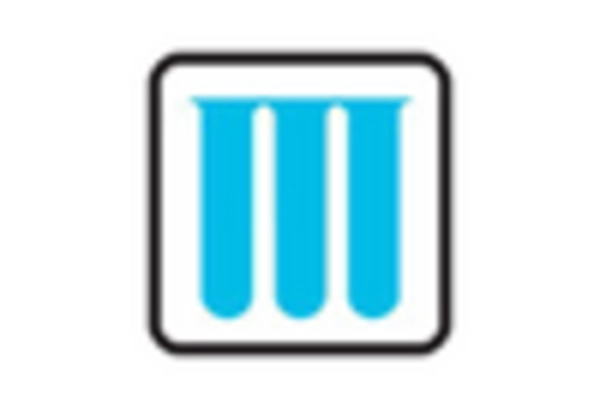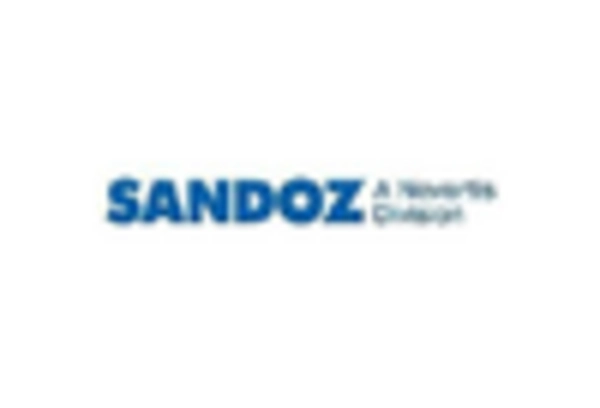The Atosiban Market is characterized by competitive dynamics that are influenced by various factors, including product efficacy, pricing strategies, market penetration, and the presence of key players within the pharmaceutical industry.
Atosiban, a synthetic peptide oxytocin antagonist predominantly used to delay preterm labor, has seen significant interest among pharmaceutical companies aiming to capture a share of the market.
The competitive landscape is marked by ongoing research and development efforts, regulatory challenges, and the need for solid marketing strategies to effectively reach healthcare providers and patients. Companies are not only focused on developing Atosiban formulations but also on improving delivery methods and ensuring compliance with regulatory bodies, which all play essential roles in shaping market dynamics.
Sanofi holds a prominent position within the Atosiban Market, leveraging its extensive experience and strong brand reputation in the pharmaceutical industry. The company benefits from an established distribution network, which enhances its capacity to deliver Atosiban to healthcare providers worldwide.
Sanofi's strength is further underlined by its rigorous adherence to quality standards, allowing for the production of highly effective formulations of Atosiban, which are pivotal for clinical success in managing preterm labor.
Additionally, the company places a significant emphasis on research and innovation, continuously enhancing its product offerings and ensuring that it remains competitive in a landscape that demands constant evolution in therapeutic solutions.
Sanofi's strategic partnerships and collaborations with healthcare professionals also contribute to its robust market presence, facilitating comprehensive education and support for Atosiban's use.
Teva Pharmaceutical Industries demonstrates significant competitiveness within the Atosiban Market through its commitment to providing high-quality generic and specialty medications. Teva stands out for its solid manufacturing capabilities and a well-structured supply chain that ensures the availability of Atosiban in various markets.
The company's focus on affordability makes its Atosiban formulations an attractive option for healthcare providers, particularly in cost-sensitive regions. Teva has established a reputation for efficient product development and the maintenance of rigorous standards throughout its production process, which helps in achieving consistent therapeutic outcomes.
Furthermore, Teva's engagement in community health initiatives and educational programs surrounding preterm labor and Atosiban enhances its brand visibility and acceptance among healthcare stakeholders.
With its innovative approach and strategic market positioning, Teva Pharmaceutical Industries continues to make significant strides in the Atosiban Market amidst competitive pressure.


















Leave a Comment